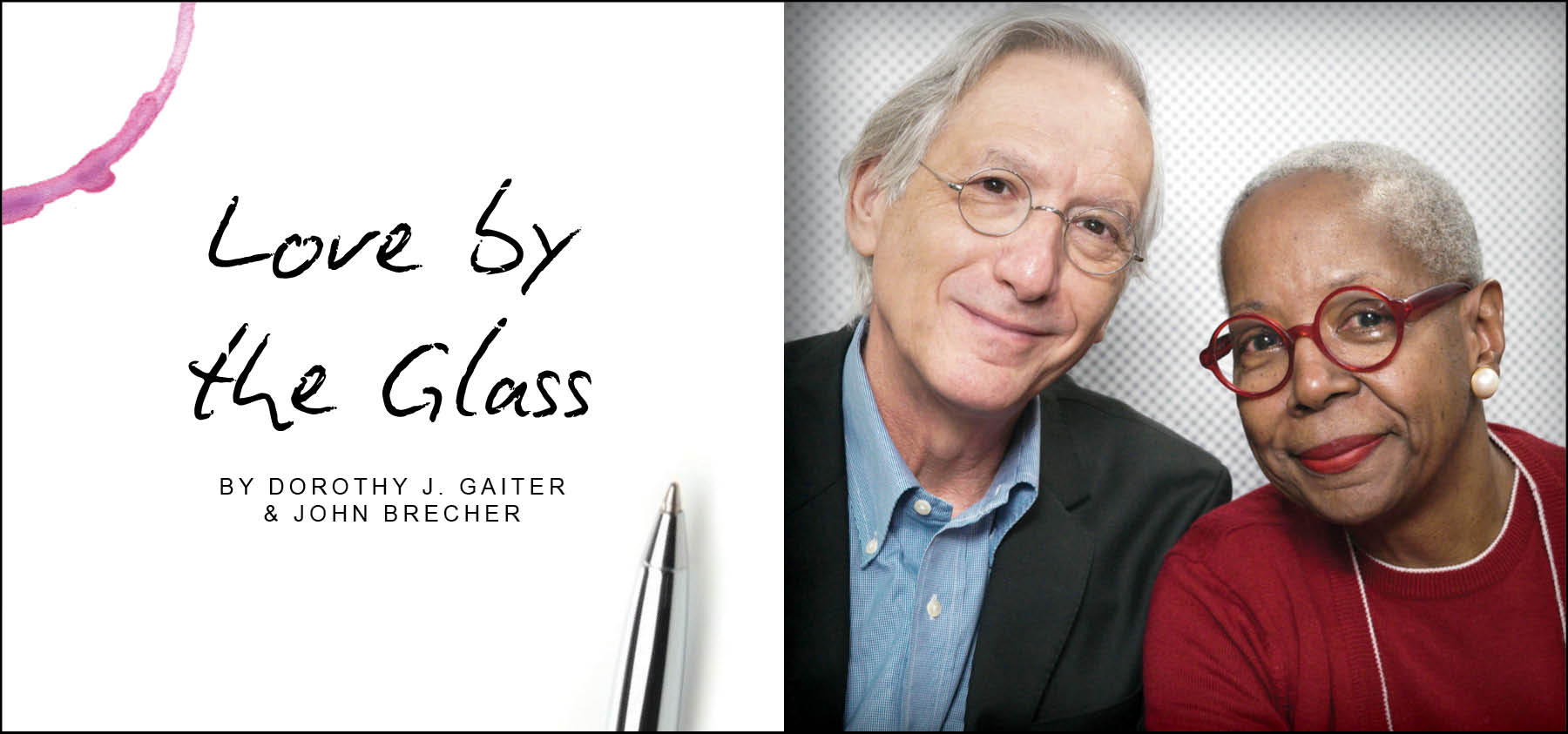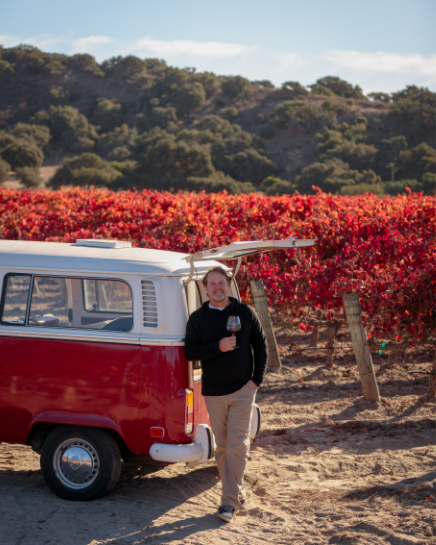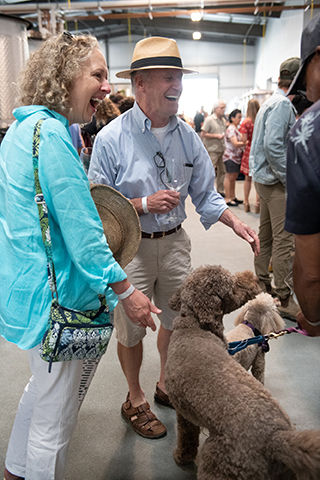
With the pandemic receding in many parts of the U.S., your thoughts may be returning to a long-delayed visit to California’s Wine Country. If so, you should be aware of this: The tasting experience has changed and those changes, in many cases, will be permanent.
Wineries will be firmer about appointments. There will be more options, many with food and at different prices. Many or all of the visits will move outdoors. And the average tasting will be long – figure 45 minutes or more. It will also be more intimate, which in most cases will surely be great but also could mean a long, hard sell for the winery’s wine club.
None of these are new. Wineries have been headed this way for a while, but many were moving slowly and carefully away from the days of drop-in, stand-by-the-bar, inexpensive tastings. The pandemic forced them to change quickly and dramatically and, based on multiple conversations we’ve had over the past couple of weeks, they are not looking back.
 From Darioush Winery in Napa (which got its entire hospitality staff certified WSET II or III) to Navarro Vineyards and Winery in the Anderson Valley (which now schedules 90 minutes for a tasting), owners took the past year to assess what now is generally called “the tasting experience.”
From Darioush Winery in Napa (which got its entire hospitality staff certified WSET II or III) to Navarro Vineyards and Winery in the Anderson Valley (which now schedules 90 minutes for a tasting), owners took the past year to assess what now is generally called “the tasting experience.”
(Chad Melville with his VW bus, December 2020. Photo credit Craft & Cluster)
“Our Tasting Room experience at the winery has completely changed, and for the better,” Chad Melville, head winegrower at Melville Winery in the Sta. Rita Hills region of Santa Barbara, told us in an email. “We have invested in some gorgeous outdoor furniture for our already beautiful outdoor setting. Guests make a reservation and stay for up to 1.5 hours, receiving table service, a connection to their hospitable server, education, and lots of insight.
“We are also now offering exclusive private tours that I lead through the winegrowing process and end up in the library, tasting current wines, along with barrel samples and-or library wines where applicable.
“We also offer a winegrowing tour on the weekends where one of our staff takes up to six out to the vineyard in my 1972 VW bus (little red), and tastes wine from the exact spot it was grown.”
We asked Melville if this is all permanent and, if so, why he hadn’t done it sooner. He responded: “Yes, these changes are absolutely permanent. It is indeed funny how in the chaos of the pandemic, new opportunities were born. When I think of the old way of having everyone inside, around the bar, it makes me cringe. Now everything is spread out, safe, more intimate, and a deeper connection.
“I’ve always felt doing tastings outside was a horrible idea, because of the distraction of other noises, aromas, people, but what the hell do I know?”
How much do tastings cost now? It’s all over the map. Cakebread Cellars in Napa, for example, has seven different ones from a simple three-glass tasting that costs $30 to a cooking class for $250. Time-wise, these start at 45 minutes.
There’s no question the demand is strong for tastings – or as Remi Cohen, CEO of Domaine Carneros in Napa put it, “We have been seeing pent-up demand for a festive spirit.”
Bruliam Wines in Sonoma shares a custom-crush facility in Windsor, Grand Cru Custom Crush, that had its first large tasting in 16 months on a Saturday in mid-July. About 15 wineries participated and more than 500 people showed up to taste. Kerith Overstreet, the owner-winemaker for Bruliam and a savvy observer of the wine scene, told us the tasting world has been remade.
“Going forward, I believe that winery tastings will likely remain by appointment only,” she told us in an email. “Here is why: Last June, the Wine Institute outlined winery best practices for a safe reopening. These guidelines mandated that all tasting rooms adopt a by-appointment-only model. From a COVID perspective, this allowed for contact tracing in the event of infection and enforced capacity limits. While this was necessary by law, the by-appointment model offered an added bonus: It allowed for a more in-depth, personal, intimate, deep-diving tasting experience. Rather than belly up to the tasting bar with 16 other drinkers, visitors now tasted in small groups with a much more personal, guided, curated experience. By default, with fewer guests on site, tasting appointment length expanded as well.
 (Kerith Overstreet, Photo credit: Jacquelyn Warner Photography)
(Kerith Overstreet, Photo credit: Jacquelyn Warner Photography)
“For all wineries, big and small, the tasting evolved into an ‘experience.’ And we have to offer something great. During COVID, everyone stayed home and played on the Internet, reading about travel and yearning to travel instead of actually traveling. Now that California is reopened and wine lovers are looking to visit wine country, they are ever-savvier, having researched wineries before leaving home. And wine lovers are excited to deep dive, seeking out curated, one-on-one experiences, paying for fewer in-depth tastings in contrast to superficially visiting five wineries in a day (which was craaaazy pre COVID).
“For the big wineries, remaining by-appointment-only allows them to add guest data to their database, since they have all of the contact details up front. For little fries like me, I’ve always been by appointment anyway. But I am very happy to be hosting guests who are eager to learn about Bruliam Wines. People are so happy to be out and drinking wine. Honestly, these days many of my tastings inch towards two hours. It’s a LONG time. But people are craving an opportunity to chat and chat and chat,” added Overstreet, who is also a surgical pathologist.
And thoughtful winemakers do enjoy talking to people who are genuinely interested in their wines. John Skupny, proprietor and winemaker at Lang & Reed Napa Valley, didn’t have a tasting room until 2020, which turned out to be a lifeline when COVID hit and restaurants closed. Today, Skupny told us: “Now that the wholesale business is returning we are having to adjust and re-evaluate how we handle what had been historically our base. We are trying to keep it in balance but the increased revenue from the Direct business is very attractive and it is enjoyable to be in touch and taste with people who have been seeking us out. A brave new world for sure.”
 As consumers, we are somewhat ambivalent about the tasting room of the present and future. We enjoyed the serendipity of dropping into wineries – not just in the U.S., but all over – and taking a brief tour d’palate of the place. That’s not an actual expression, but what we mean is that, for us, even when we were young, we liked to go in, smell wines deeply, taste a small amount very thoughtfully (and possibly spit) and have an interesting conversation with the person behind the counter. We not only met some wonderful people, but tasting through the wines fairly quickly gave us an overall sense of the winery’s vision, if it had one. We don't remember being in a tasting room just tasting wine for 45 minutes, but some wine-food pairings at wineries lasted that long.
As consumers, we are somewhat ambivalent about the tasting room of the present and future. We enjoyed the serendipity of dropping into wineries – not just in the U.S., but all over – and taking a brief tour d’palate of the place. That’s not an actual expression, but what we mean is that, for us, even when we were young, we liked to go in, smell wines deeply, taste a small amount very thoughtfully (and possibly spit) and have an interesting conversation with the person behind the counter. We not only met some wonderful people, but tasting through the wines fairly quickly gave us an overall sense of the winery’s vision, if it had one. We don't remember being in a tasting room just tasting wine for 45 minutes, but some wine-food pairings at wineries lasted that long.
(First big tasting at Grand Cru Custom Crush in Windsor in 16 months, Photo credit: Jacquelyn Warner Photography)
We also remember when tastings were free or very reasonable. Sure, the world has changed, but let’s say the average now is $60 per person for the kind of tasting we’d want (wine only). That means $120 per stop, even without buying any wine. If we visited just two wineries in a day, that’s going to add up quickly. We’d have to take that into account when deciding not only which wineries to visit, but which regions. That seems to tilt Napa and Sonoma, especially, even more toward a moneyed crowd, which makes us wonder how we would have fared as 25-year-old journalists using money we’d saved all year.
On the other hand, tasting wine at the source has always and will always be very special and wineries need income. The more winemakers like Chad Melville who come up with something new, like his VW bus tour and tasting, the better. And, ultimately, wine tasting is always about something deeper than the wine, as co-presidents Claire and Alan Ramey of Ramey Wine Cellars in Sonoma reminded us in an email:
“Since we don’t have an outdoor space to receive guests, we could only host guests in our parking lot with a DIY tasting setup. We sanded down an old piece of lumber from our ranch and put it on top of a couple barrels as a side bar and set up a table with some plants. It was very humbling. Once we started, though, people said they enjoyed it. Many guests told us it was the best experience of their trip.
“As the pandemic’s severity has lessened, we’ve noticed that visitors are more cognizant about booking tasting reservations in advance. Since we’ve always been by appointment, this has been great for us. It’s been great for visitors, too, because they may not have considered trying the reserved tasting format until so many other wineries began adopting it. It seems that people are finding that the sit-down, in-depth tasting is actually really fun and educational.
“So for us, COVID reinforced that it really is about wine quality, good conversation, and good people. A good propane heater for cold mornings helped, too.”
Wineries are magical places. The vineyards are beautiful, the perfectly stored wine is often most delicious right there and the people who make it all happen are generally lovely. Wineries need and deserve your support, not just in California but all over the U.S. What are you doing this weekend? Go visit a winery.
Dorothy J. Gaiter and John Brecher conceived and wrote The Wall Street Journal's wine column, "Tastings," from 1998 to 2010. Dorothy and John have been tasting and studying wine since 1973. In 2020, the University of California at Davis added their papers to the Warren Winiarski Wine Writers Collection in its library, which also includes the work of Hugh Johnson and Jancis Robinson. Dottie has had a distinguished career in journalism as a reporter, editor, columnist and editorial writer at The Miami Herald, The New York Times, and at The Journal. John was Page One Editor of The Journal, City Editor of The Miami Herald and a senior editor at Bloomberg News. They are well-known from their books and many television appearances, especially on Martha Stewart's show, and as the creators of the annual, international "Open That Bottle Night" celebration of wine and friendship. The first bottle they shared was André Cold Duck. They have two daughters.
Banner by Piers Parlett










